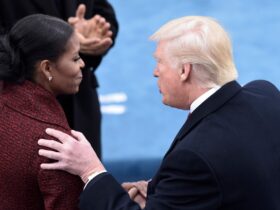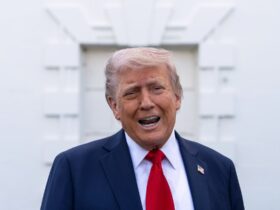As the Trump administration reasserts its “America First” trade doctrine, a new wave of Section 301 sanctions targeting China’s shipbuilding and logistics sectors is poised to reshape global supply chains. The stated objective is clear: restore industrial sovereignty, rebalance global maritime competition and revive America’s shipbuilding sector.
But for U.S. exporters, particularly those in agriculture, manufacturing, energy and logistics, the costs of this policy shift could be both immediate and consequential.
In February, the Office of the U.S. Trade Representative proposed sweeping sanctions on China’s maritime and shipbuilding industries. These include port entry fees of up to $1.5 million on Chinese-built vessels, a mandate to use U.S.-built ships for a portion of exports and restrictions on China’s state-run logistics platform, LOGINK.
The office argues these actions are vital for national security and the strategic reconfiguration of global supply chains.
But there’s another side to this policy, and it demands serious attention. According to a recent economic analysis by Francois and Baughman, these sanctions could reduce U.S. GDP by up to 0.3 percent annually and worsen the trade deficit.
Their model forecasts that wheat, rice and soybean exports may fall by 11-15 percent due to increased shipping costs, weakening U.S. competitiveness relative to Brazil, Australia and Canada. Exports in energy and manufacturing may also decline sharply, with an estimated 40,000 jobs at risk in those sectors.
The core issue is not whether the U.S. should reduce its dependency on China. The real question is how to do it without damaging the very industries we seek to protect. A one-sided approach without parallel investment in domestic shipbuilding capacity, export infrastructure and workforce readiness risks creating more harm than resilience.
Industry groups and port authorities are already warning of disruptions to container throughput in key hubs like Houston, Long Beach and Savannah. These ports, still recovering from pandemic-era congestion and labor challenges, could see volume reductions of 5-10 percent — a blow that would ripple through trucking networks, warehouse employment and export operations.
While mandates for U.S.-built vessels may sound patriotic, the reality is sobering: The U.S. currently produces only one to two large commercial vessels per year, at costs that are up to four times higher than those built abroad.
Meanwhile, global manufacturers aren’t standing still. Many are doubling down on their “China Plus One” strategies, shifting production to countries like Vietnam, India and Mexico.
In 2023, foreign direct investment in Vietnamese and Indian manufacturing rose by 13.2 percent and 18.4 percent, respectively. Major players such as Apple, Samsung and Foxconn have already begun to realign their supply networks.
As trade routes and sourcing patterns change, U.S. logistics providers could find themselves bypassed or left behind if they fail to adapt.
At the heart of this shift lies a policy paradox: While the Office of the U.S. Trade Representative promotes sanctions as a path to fair competition and industrial revival, the immediate fallout may undercut sectors that rely on global market access and logistical efficiency, especially agriculture and energy exports.
Uncertainty in trade policy further complicates matters. As Handley and Limão have noted, unpredictability in trade environments discourages investment, hiring and long-term planning. For many U.S. exporters, especially small and midsize enterprises, unclear policy direction and rising logistical costs are pushing them toward less volatile, more predictable markets.
To be sure, industrial self-reliance and resilient supply chains are important goals. But sanctions alone cannot shoulder the weight of that transformation.
Success will require complementary strategies: investments in port modernization, support for fleet renewal, workforce development and enhanced digital logistics infrastructure. Incentives and partnerships — both domestic and international — are essential to ensure that U.S. firms remain globally competitive.
Timing, too, is critical. Imposing restrictions before building adequate capacity could result in strategic missteps. Exporters facing higher costs and constrained options may pivot to alternative markets, reducing throughput in U.S. ports and slowing job growth in logistics and transportation.
We’ve seen this pattern before. In prior trade conflicts, short-term sanctions have often produced long-term costs. Today’s stakes are higher because global supply chains are no longer just adjusting; they are undergoing fundamental transformation.
The Trump administration’s renewed trade posture reflects a strong desire to lead through strength. But if Section 301 sanctions are to succeed, they must be accompanied by a comprehensive vision that empowers American exporters and logistics providers to compete and doesn’t constrain them. Otherwise, these policies could weaken the very foundations of the economy they aim to protect.
Policymakers must ask: Are we building a more resilient economy or just raising new barriers? Section 301 sanctions may be a starting point, but without a coordinated investment strategy, they risk becoming a self-imposed bottleneck.
It’s time to pair trade assertiveness with infrastructure foresight before America’s exporters pay the price.
Paul Hong, Ph.D., is a distinguished university professor and chair of the Department of Information Systems and Supply Chain Management at the University of Toledo.
















Leave a Reply